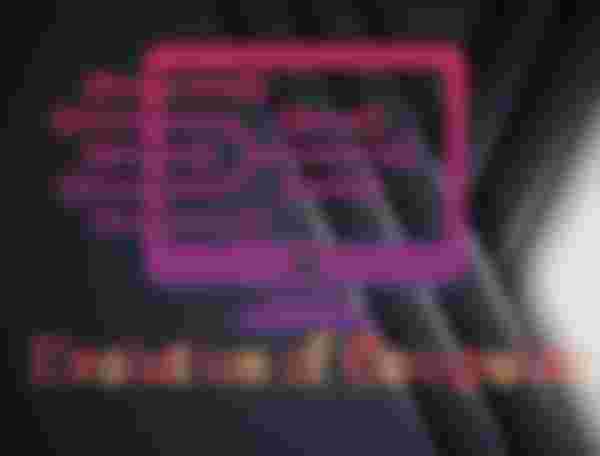May 22, 2021

The Five Generation of Computer
The past continues to develop and evolve for a greater future. The history of computer development is what we called now “ The different Generation of the Computer. The flaws and mistakes of the past have been fixed and the features of an invention continue to be modified and upgraded for a better invention as from the first generation to the recent. Each generation, the circuitry has gotten more advanced and convenient to use than the previous generation before it, in terms of sizes, components and other parts of a computer.
First Generation Computers:
The period of the first generation was from 1946-1959. The computers of the first generation used vacuum tubes as the basic components tor memory and circuitry for CPU (Central Processing Unit). These tubes, like electric bulbs, produced a lot of heat, and the installations often blew up. As a result, they became prohibitively costly, with only major corporations able to afford them. Batch processing operating systems were mostly used in this generation. Input and output devices included punch cards, paper tape, and magnetic tape. Also, the computers in this generation used machine code as the programming language.
Furthermore, the main features of the first generation computers are the following:
✓The computers were made up of a vacuum tube technology, and it was unreliable.
✓It also supported machine language only,
✓It was very costly,
✓it generated a lot of heat,
✓a slow input and output device.
✓The size was huge, need of AC, non portable,
✓It also consumes a lot of
electricity.
Examples of models that can be seen in this generation were ;
✓ENIAC
✓EDVAC
✓UNIVAC
✓BM-701
✓IBM-750.
Second Generation Computers:
The period of the second generation was from 1959-1965. This generation used transistors, which were less costly, used les fuel, were Simpler, more efficient, and quicker than the first-generation devices, which used vacuum tubes. Magnetic cores were used as the main memory of this generation, with magnetic tape and magnetic disks serving as secondary storage units. Also, in this generation, assembly language and high-level programming languages like FORTRAN, COBOL were used. The computers used batch processing and multiprogramming operating systems.
Furthermore, the main features that can be seen in this generation were:
✓Computers of the second generation are used as transistors, and it was considered as are liable technology in comparison to first generation computers.
✓Its size is smaller as compared to first generation computers, generates less heat as compared to first generation computers,
✓Consumes less electricity as compared to first generation computers, faster than first generation computers,
✓Still very costly
✓AC required
✓Supported machine
✓ assembly languages.
The example of models found in this generation were
✓lBM 1620
✓IBM 7094
✓CDC 1604
✓CDC 3600
✓UNIVAC 1108.
Third Generation Computers
The third generation was from 1965-1971. Integrated Circuits (ICs) replaced transistors in third-generation computers. A Single integrated circuit (IG) includes a significant number of transistors, resistors, and capacitors, as well as the related circuitry. The IC was invented by Jack Kilby. This development made computers smaller in size, reliable, and efficient. In this generation remote processing, time-sharing, and multiprogramming operating systems were used.
Moreover, the main features of the computer in this generation were:
✓IC used, more reliable in comparison to previous two generations, smaller size,
✓Generated less heat, faster, lesser maintenance, costly, AC required,
✓Consumed lesser electricity, and supported high-level language.
The examples of models for this generation were
✓ lBM-360 series
✓ honeywell-6000 series,
✓PDP (Personal Data Processor). ✓IBM-370/168,
✓TDC-316.
Fourth Generation Computers
The period of the fourth generation was from 1971-1980. VLSI (Very Large Scale Integrated) circuits were used in the fourth generation of computers. Microcomputers of the fourth generation were made possible by VLSI circuits of about 5000 transistors and other circuit elements on a single chip, along with their related circuits. Additionally, fourth generation computers became more powerful, compact, reliable, and affordable. As a result, it gave rise to the Personal Computer (PC) revolution. In this generation, time sharing, real time networks, and distributed operating systems were used.
Moreover, the features found in the fourth generation were:
✓VLSI technology used, very cheap. portable and reliable, use of PCs, very smal size, pipeline processing no AC required,
✓the concept of internet was introduced
✓Great developments in the fields of networks, and computers became easily available.
The examples of models found in this generation were
✓DEC 10
✓STAR 1000
✓PDP 11
✓CRAY-1(Super Computer)
✓CRAY-X-MP(Super Computer)
Fifth Generation Computers
The period of fifth generation is 1980-till date. In the fifth generation, VLSI technology became ULSI (Ultra Large Scale Integration) technology, resulting in the production of microprocessor chips having ten million electronic components. Parallel computing hardware and Al (Artificial Intelligence) applications are at the heat of this century. Artificial intelligence (Al) is a modern branch of computer science that explores how to make machines act like humans.
Additionally, the main features in this generation are:
✓ ULSI technology
✓Development of true artificial intelligence
✓ development of natural language
processing
✓Advancement in Parallel Processing and Superconductor technology
✓More user-friendly interfaces with multimedia features and availability of very powerful and compact computers at cheaper rates.
The examples of models found in this generation are
✓ Desktop
✓ Laptop
✓Notebook
✓Ultrabook
✓Chromebook.
THUS,the generation of technologies made a great impact the way we live, work and play and in society, specifically the generation of computers as this continues the development of computers with better features as time passes by.
Source: https://btob.co.nz/business-news/five-generations-computers/
